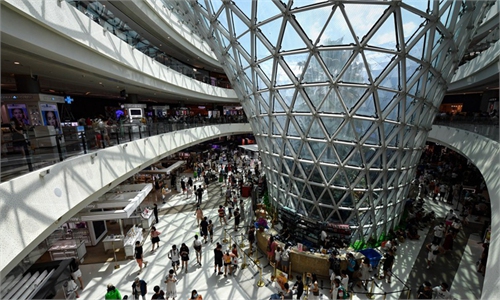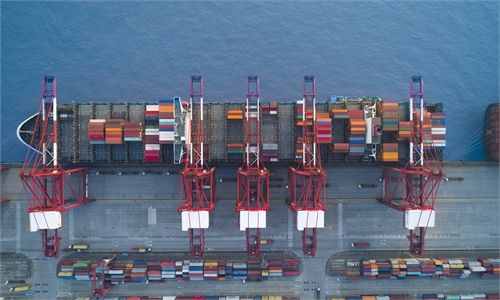China’s economic recovery broadens in Nov, paving the way for 3% GDP growth rate for whole-year
All major indicators return positive growth with strong factory, retail growth
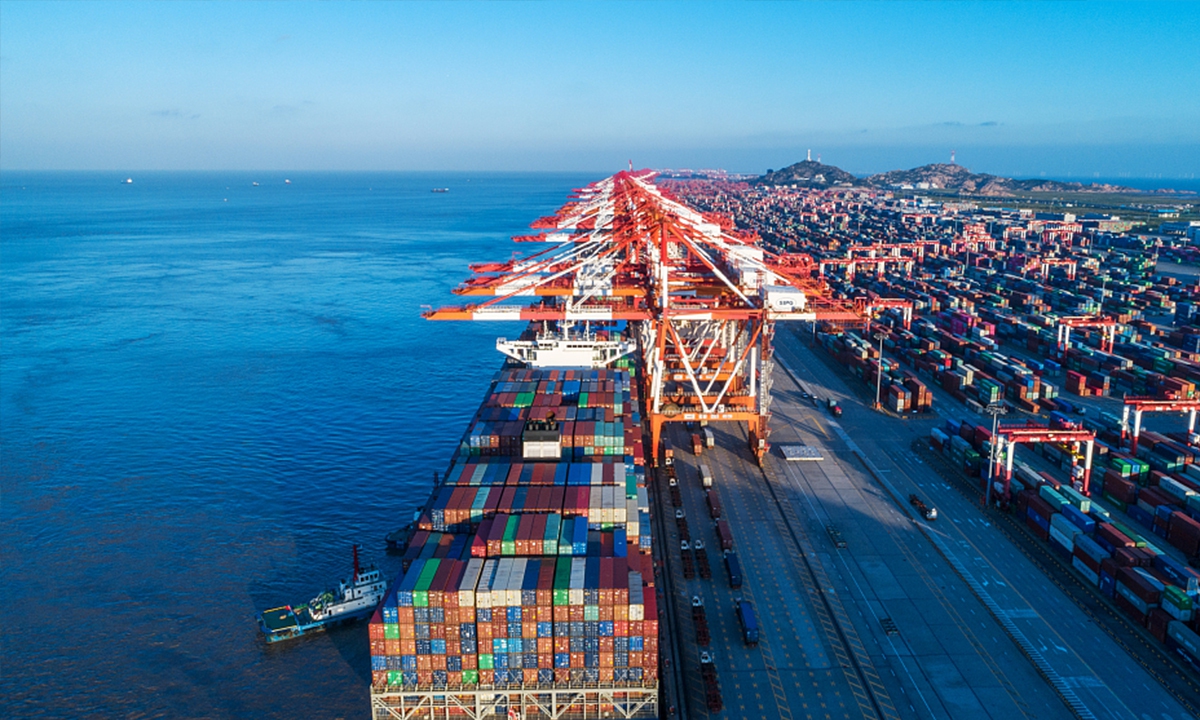
GDP Photo: VCG
China's economic activity rolled ahead in November as both retail sales and industrial output growth accelerated, while multiple sectors across private investment, industrial profits and the services industry reported positive growth for the first time this year, official data showed on Tuesday, painting a picture of the country's robust economic recovery that has by no way slowed down in spite of external coronavirus threats and global political uncertainties.
All major areas ranging from manufacturing to retail sales reported positive and faster growth in November, according to data released by the National Bureau of Statistics (NBS).
Major industrial enterprises' output rose 7 percent in November from a year earlier, accelerating from 6.9 percent growth in October, beating the expectation of Wall Street Journal economists by one percentage point. Nationwide spending on consumer goods surged by 5 percent, quickening from a 4.3 percent growth in October, while fixed assets investment grew by 2.8 percent in November from one month earlier.
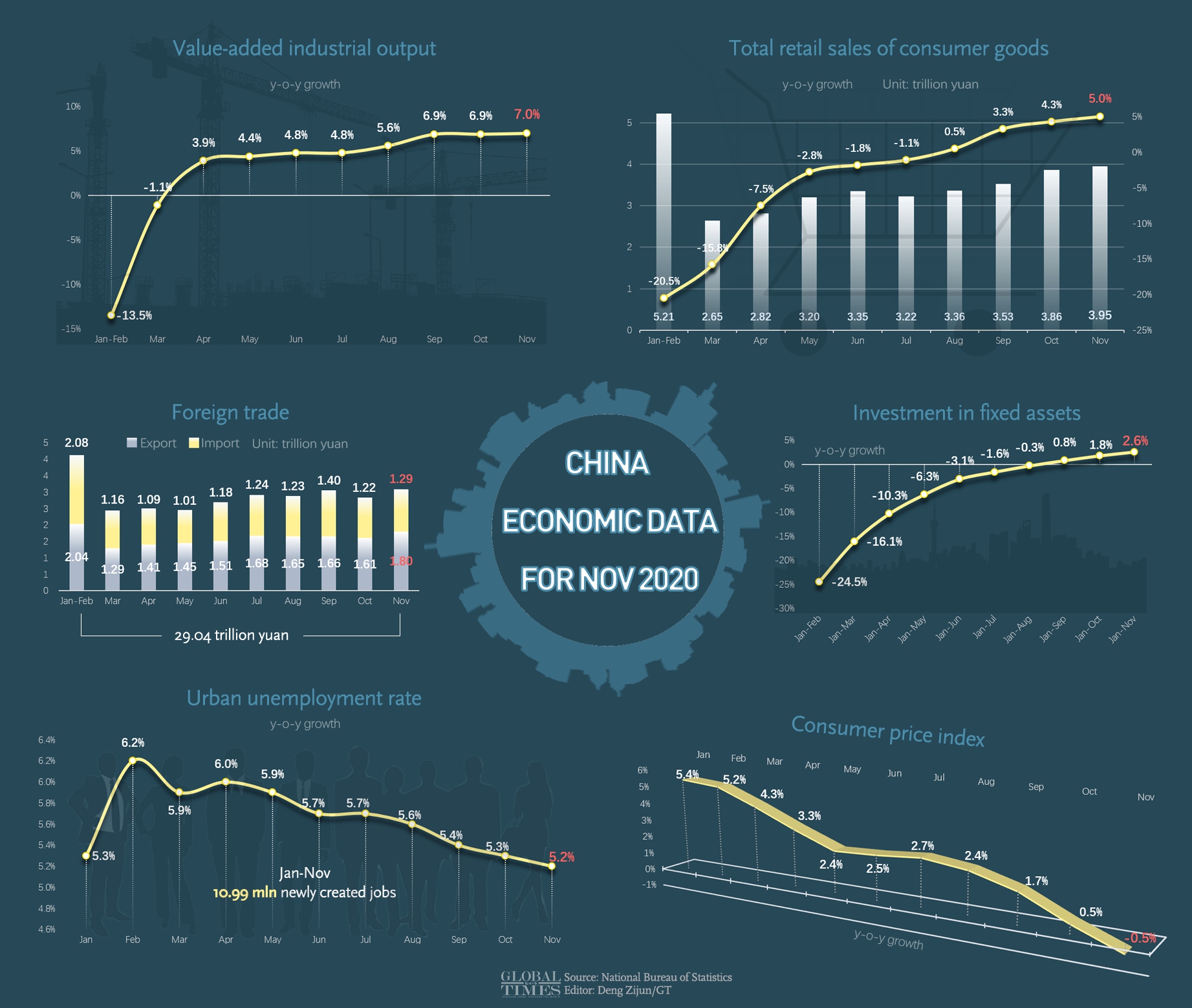
China economic data for Nov 2020 Infographic: GT
Three economic fields - private investment, services industry revenues and industrial profits jumped from negative into positive growth for the first time this year as China's economic recovery picked up. Private investment rose 0.2 percent year-on-year from January to November. Major industrial firms in China saw profits grow by 0.7 percent on a yearly basis during the first 10 months, while business revenue of service enterprises above the designated size grew by 0.3 percent year on year.
Fu Linghui, spokesperson of the NBS, said that China will "make some policy adjustments" as the economy gradually tends toward normality. "Economic recovery takes time and keeping policies on course and effective is key to spurring healthy economic growth," he said.
The broad economic recovery in November as shown by the economic data has boosted economists' confidence in China's GDP growth this year, which they projected could be around 2-3 percent. Some have considered raising projections on GDP based on the upbeat economic situation in November.
In a research note sent to the Global Times, Nomura economists said they see some "upside risks" to their 5.7 percent year-on-year GDP growth forecast for the fourth quarter, given the strong readings in November and the solid growth momentum in December. Their chief China economist Lu Ting forecast China's GDP to grow by 2.1 percent in 2020.
The macroeconomics team at China International Capital Corporation Limited also announced an upgraded forecast for China's 2020 GDP growth from 2.1 percent to 2.2 percent, as they anticipate China's fourth-quarter GDP might grow at an "evidently faster speed."
Dong Dengxin, director of the Finance and Securities Institute at the Wuhan University of Science and Technology, said that the across-the-board economic data improvement in November shows China's economic recovery is accelerating.
"If the momentum is maintained until year-end, the country's GDP in 2020 can achieve a growth rate of 3 percent year-on-year," he said, adding that the last months are important to China's whole-year economic performance, as whether China can achieve a satisfactory outcome for the whole year depends on whether consumption in the world's second-largest economy can withstand the headwinds caused by sporadic COVID-19 outbreaks in the country.
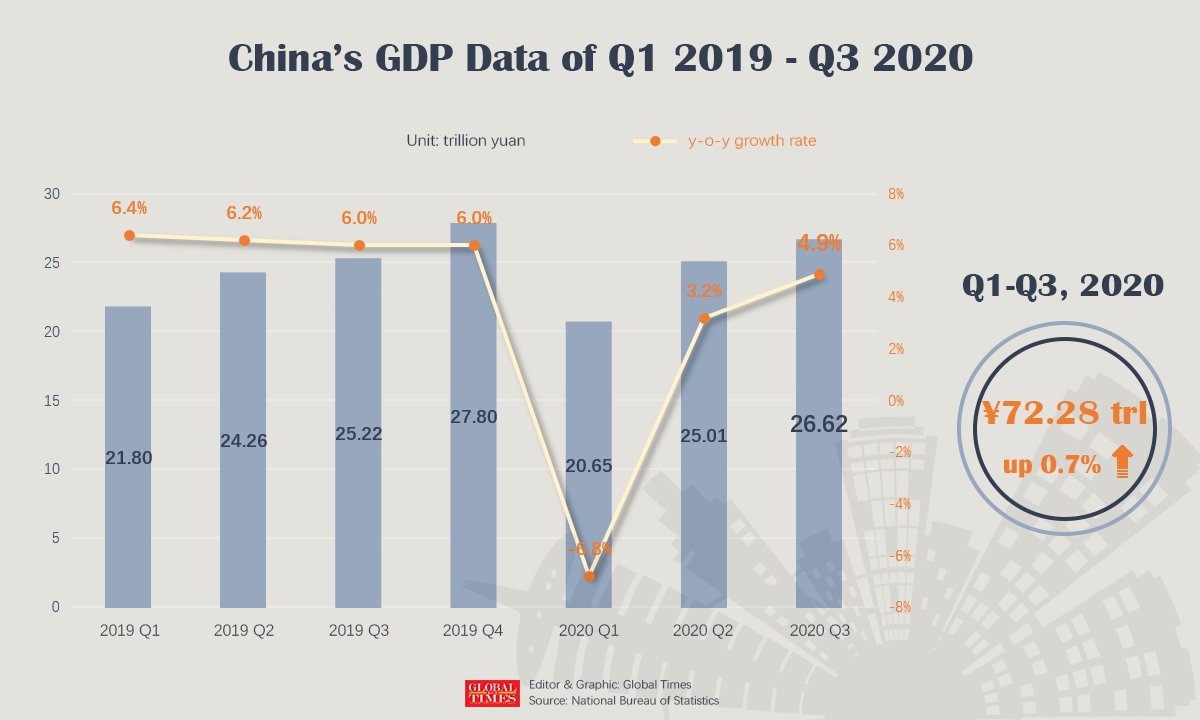
China's GDP Data of Q1 2019 - Q3 2020 Infographic: GT
More opportunities in 2021
To further enhance China's economic rebound next year, Chinese officials will likely discuss measures to broaden the application of monetary, fiscal, industrial and technological policies at the upcoming Central Economic Work Conference where the country's top officials will gather to settle policies and targets for next year, analysts said.
They forecast that apart from encouraging efforts to promote the dual-circulation development pattern, China will also promote demand-side structural reform, indicating that domestic firms will not only focus on demand from foreign markets, but should also take domestic demand into consideration.
According to Dong, the focus for China's economic work in the next year will be set around the tasks of stabilizing employment and expanding consumption. Moreover, some current support policies will remain for the time being, because certain domestic industries, such as catering, have not fully bounced back to pre-pandemic levels despite the general faster-than-expected economic rebound.
Gao Liankui, a professor and a member of the academic committee at the EU Business School, predicted that officials will discuss issues like high-quality development and supply-side reforms at the economic work conference.
"China will likely use a mixture of monetary, fiscal and industrial policies to boost economic development, such as pushing 5G infrastructure construction and new infrastructure projects," Gao told the Global Times.
But in terms of the strength of policy stimulation, Lu Ting from Nomura told the Global Times that China has refrained from massive-scale stimulus policies because of fast export growth this year, and policies will become further "normalized" for 2021, meaning that they will be rolled out in a slow, moderate way.
With the existing upward trend of China's economic rebound, as well as the expected support from government policies, economists are generally upbeat about China's economic performance next year, despite challenges such as sporadic outbreaks of coronavirus and the complicated diplomatic relations China has with some overseas economies.
According to Gao, China's economic growth can be guaranteed in the long run as long as the government does not cut infrastructure investment and is not distracted from improving economic efficiency.
He predicted that China's economy will usher in "multiple" favorable conditions in 2021, such as a potential rebound in China-US trade and investment after president-elect Joe Biden assumes office, as well as a sizable rebound in private investment and consumption.
"China will have more opportunities than challenges in 2021," Gao said, adding that China's GDP will hopefully grow by more than 8 percent next year.
Lu also predicted that China's economy will receive an "evident boost" starting from the second quarter of 2021, when COVID-19 vaccines are expected to produce a marked effect on the pandemic situation.

